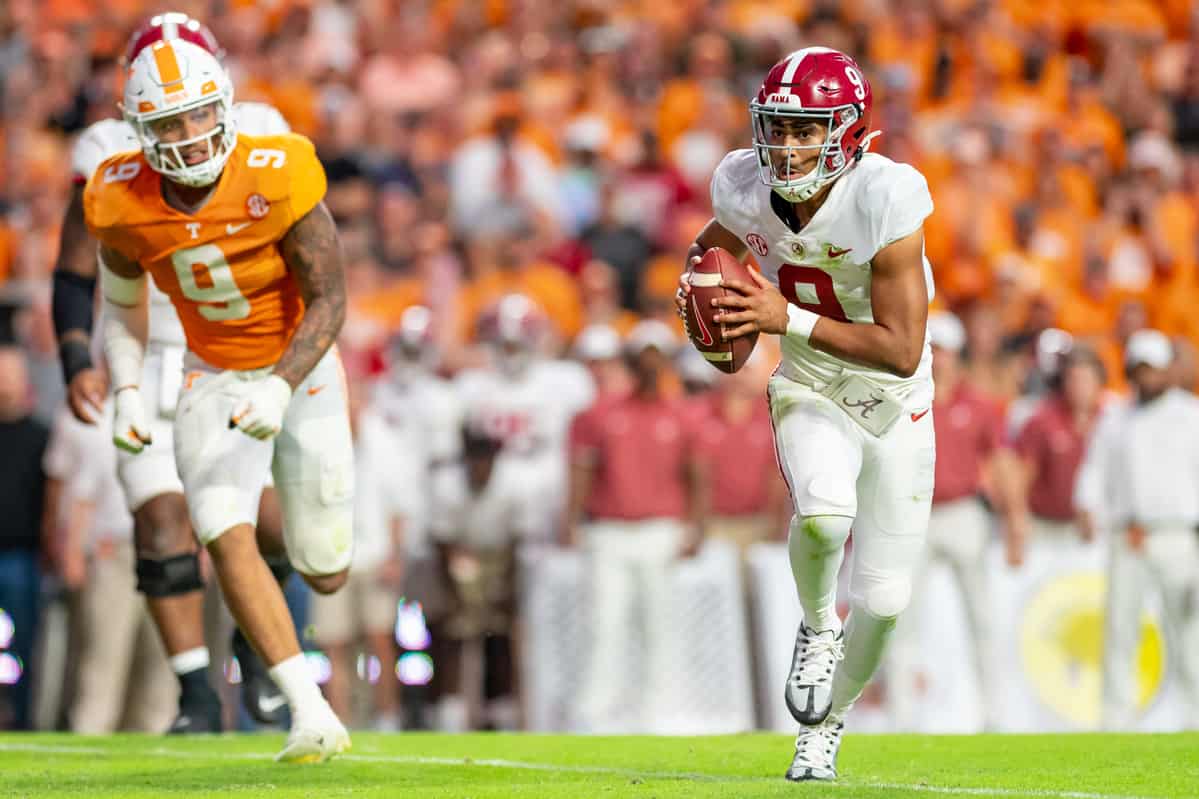The words of former University of Alabama student Irvin Carney perfectly explain the relationship between the Tennessee Volunteers and the Alabama Crimson Tide.
“Man, I hate Tennessee because first of all, it’s Tennessee,” Carney said in his viral interview. “I just hate ’em ’cause they low down, they dirty, they some snitches.”
“The Third Saturday in October” is one of the most important rivalries in all of college football, especially in the South. Bars in Tuscaloosa are taking out Jack Daniels, people are lining up around cigar shops preparing for victory, and fan bases are going for each other’s throats on social media. The hatred between these two universities runs deep, and winning means bragging rights until the next game.
But why? Why do these two teams have so much hatred for one another even though they don’t share a state or even share a division?
This rivalry goes all the way back to the start of the 20th century. The two schools, which are separated by only 310 miles, played their first game back in 1901. The matchup was played in Birmingham, Alabama, and the final score was a draw at 6 points apiece.
However, the true hatred began in 1928 when the two schools decided to meet every third Saturday in October. Back in the 1920s, Tennessee and Alabama were in the Southern Conference, a 23-team “super conference.”
In today’s terms, it’s the Alabama and Georgia rivalry. Back then, when the two teams played, it was probably going to be for a spot in the College Football Playoff or the title of conference champion.
Today Alabama leads the all-time series 58-39-7, but this was not always the case. In fact, the Volunteers owned this rivalry in the ’30s and especially the ’50s. This was because Tennessee had head coach Robert Neyland. Before retiring in 1952, Neyland had a record of 12-5-2 against the Crimson Tide. In the ’50s, Tennessee won the annual rivalry eight out of 10 times.
All hope seemed lost for Alabama until head coach Paul “Bear” Bryant brought Alabama back to being the perennial Southern powerhouse. Bryant went 16-7-2 against the Volunteers, including an 11-game winning streak that lasted from 1971-1981.
During Bryant’s reign at Alabama, one game sticks out the most. In 1961, Alabama won the game 34-3, but the aftermath shaped the rivalry to this day. After the game, Jim Goostree, who was an Alabama athletic trainer at the time and a former Tennessee trainer, made a bet to the team: Beat Tennessee, and he would dance around the locker room naked. The Crimson Tide did just that, not even allowing a touchdown, and while Goostree danced around, he handed out victory cigars to all the players in the locker room.
This started the victory cigar tradition, which is still being held to this day. The tradition almost died because the NCAA forbids smoking cigars. Back in 2005, however, Alabama figured out how to get the tradition back. After beating Tennessee for the first time in three years, Alabama self-reported the violation to the NCAA and paid the fee to let the players smoke the victory cigars.
Today, the rivalry is still as heated as it was back in the days of General Neyland and Bear Bryant. Players like Terrence Cody, who made the key “Rocky Block” to help Alabama beat Tennessee in 2009, and Jalin Hyatt, who caught 300 passing yards to end Alabama’s 15-game winning streak in 2022, live on in the history of the rivalry.
With head coach Josh Heupel bringing Tennessee back to relevance, it’s only a matter of time until we see the Third Saturday in October decide College Football Playoff spots and possible national championships as it did in the past. The two teams have a combined 24 national championships (18 for Alabama and six for Tennessee).
On Saturday, look for a big cloud of smoke over Bryant-Denny Stadium and smell the tobacco all around; you’ll know the Third Saturday in October ended in the Crimson Tide’s favor.















